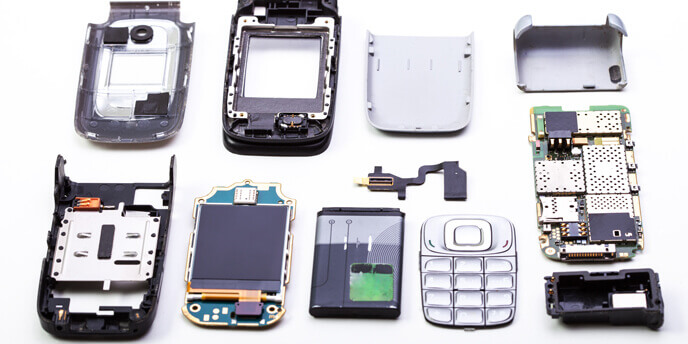The cell phone is one of the most used technological devices in the world today, it is difficult to know exactly how many phones are in the world today.
In 2017 it was estimated that there would be around 5 billion phones, while other firms such as Ericcson mention that by this year there should be approximately more than 6.1 billion people connected to the Internet through a smartphone, but what we are sure is that today there are more telephone lines than people in the world.
However, although it seems that cell phones are not a source of contamination, the reality is that if they are, both in their useful life and after disposal, in fact, if we do not dispose of them properly then we are generating much more pollution than We could believe.
Around 95% of the components of cell phones are recyclable, so selling or reusing their parts not only obtains its own benefit, but also preserves the environment.
A cell phone is the most common object that a person can have at this time, but very few know what are the electronic and mineral elements that integrate them.
And it is that 45% of these devices are made of plastic, such as the housing, cables, and even some screens, which can be used in other devices or to create new components.
While 20% of a phone is made of copper, which can be cast and used in solar panels, windmills and generators, among others, while another 20 percent of cell phones contain gold and aluminum.
Research tells us that from 50 thousand mobiles we could get a kilogram of gold and almost half a ton of aluminum. The importance of gold lies in its driving, so if the mobiles were made of this metal, its speed would be extraordinary.
In turn, aluminum is used to make new parts of broken cell phones, as well as other electronic items, such as hearing aids or television screens.
While the remaining 5% is made up of elements such as lithium, a metal that is present in a cell phone inside the battery in a liquid and thick form.
Unfortunately, lithium recycling is very difficult since it is highly polluting and cannot be reused, but there are many ways to dispose of batteries in a responsible way and without damaging the environment.
Reuse, resell or donate your cell phone helps the environment in many ways so that its elements can create new things, in the same way, its repair allows you to sell it to a new user and make a profit.
How much can a cell phone contaminate?
A cell phone emits at least 47 kilograms of CO2 (carbon dioxide) approximately during its useful life, with an average use of 2 minutes per day.
If we add that a single battery of a telephone (which contains cadmium) is capable of contaminating up to 675,000 liters of water, which must be re-produced, which means that it would be the equivalent of leaving an ecological footprint of 186 tons of CO2

